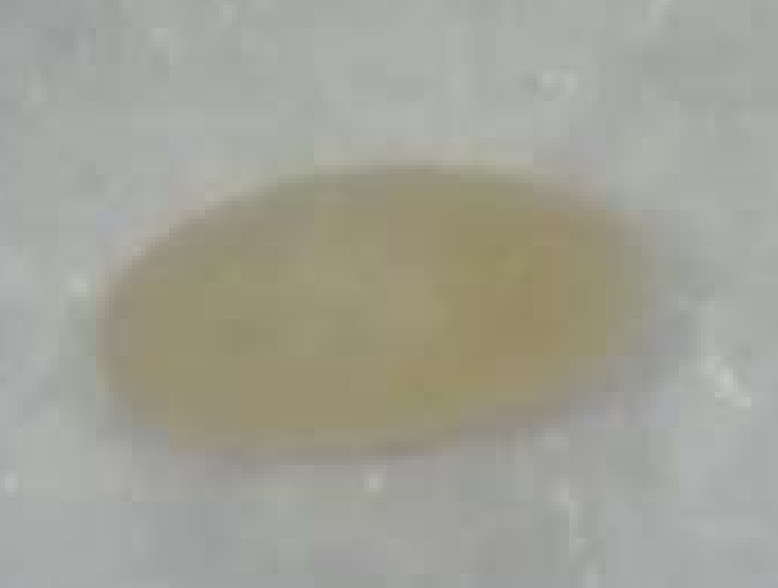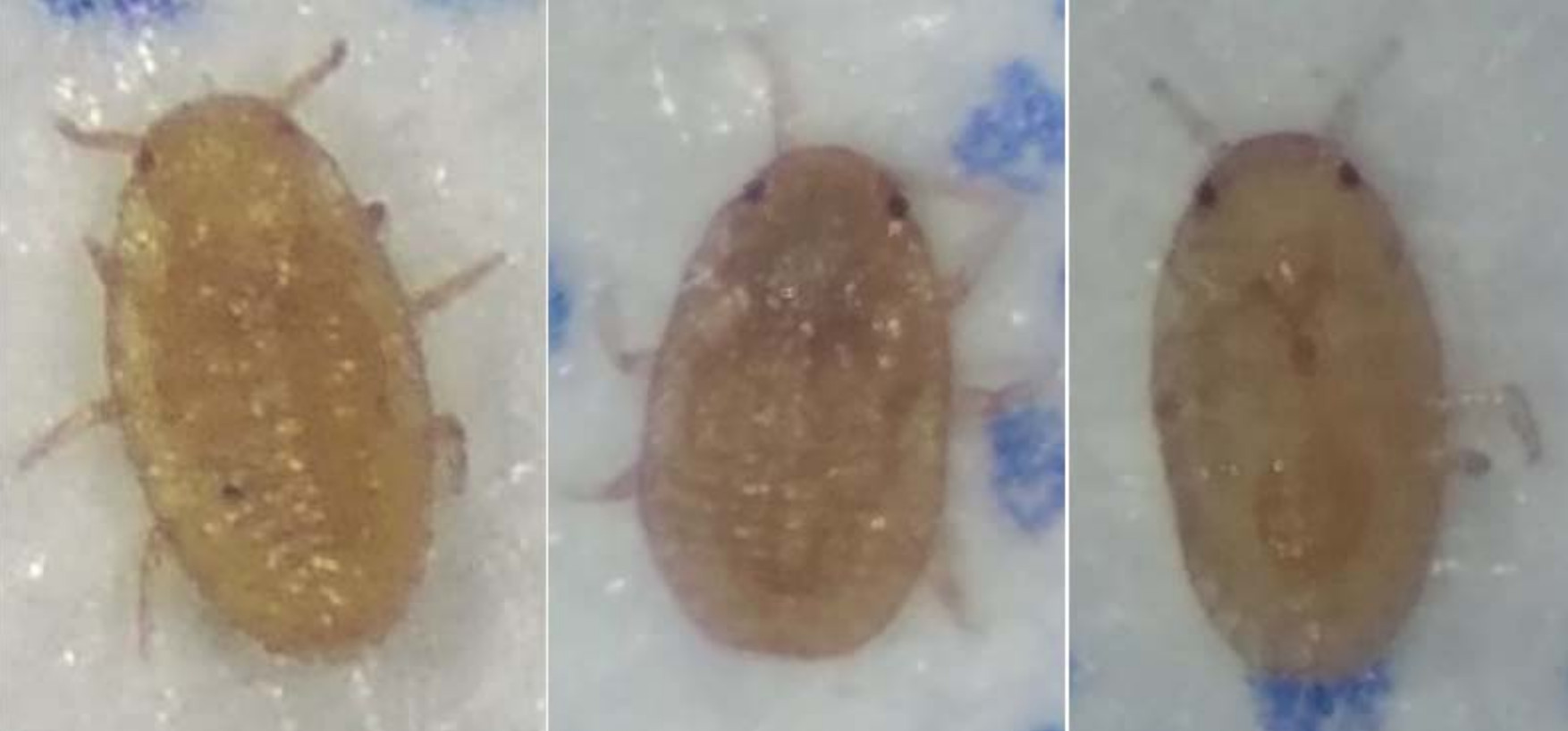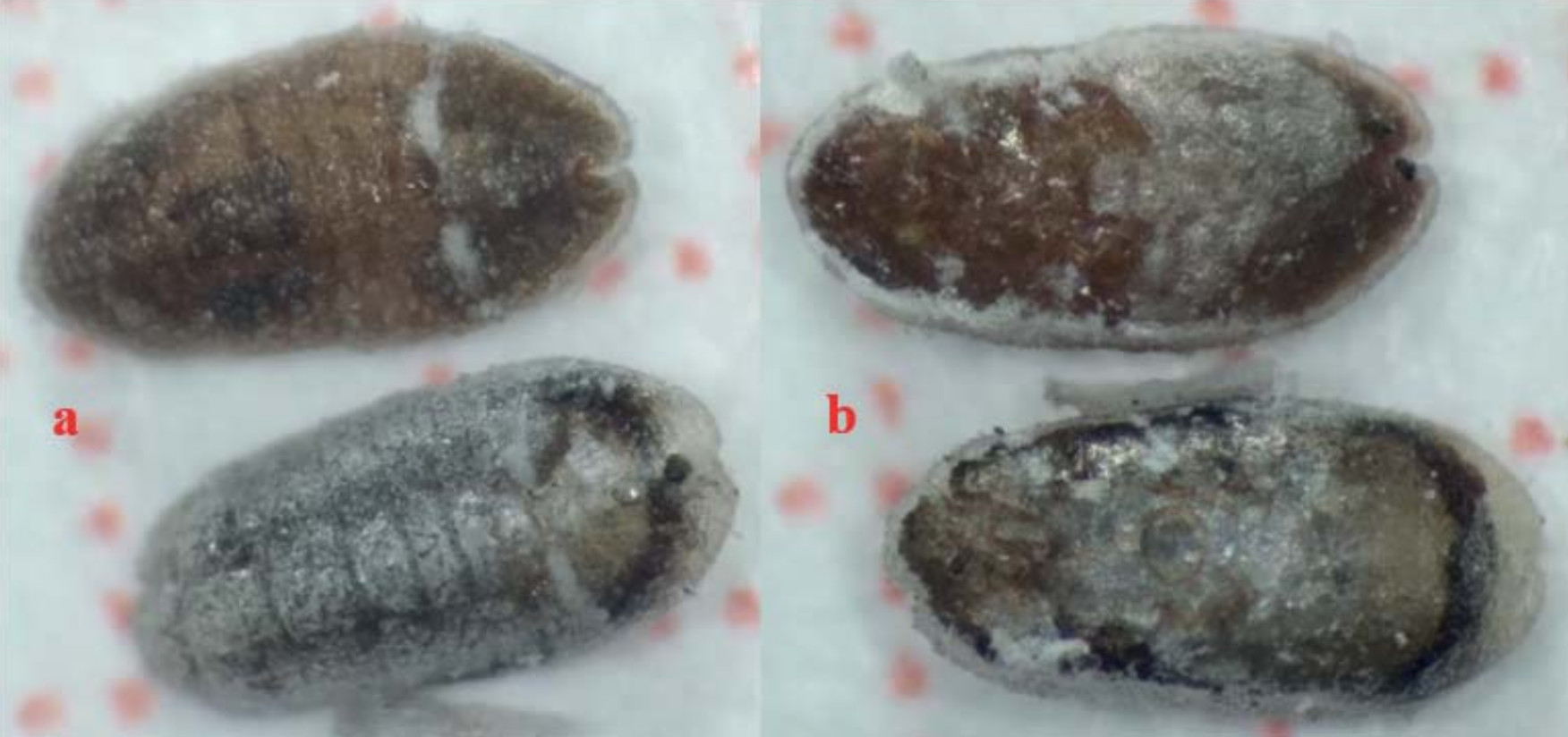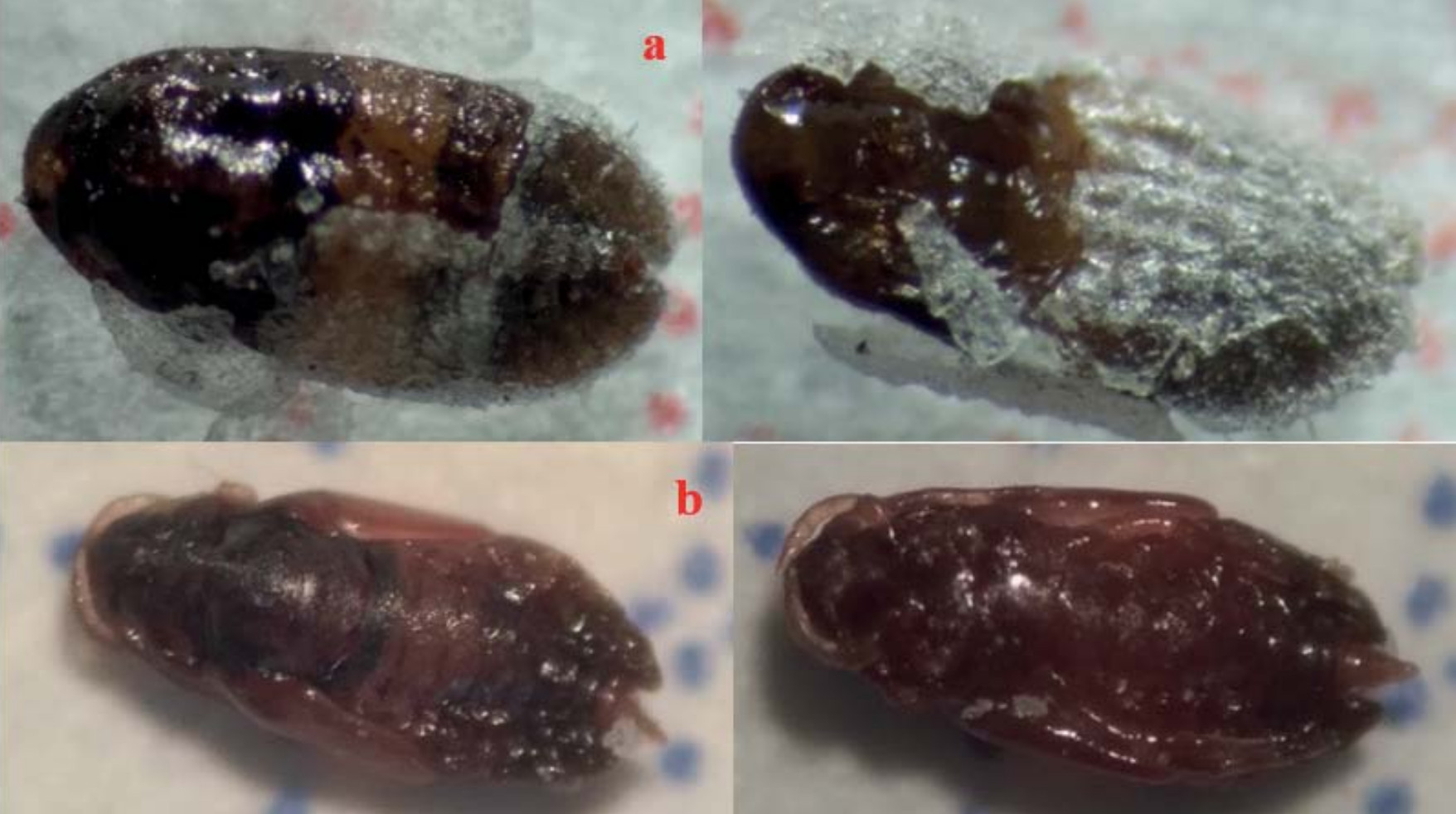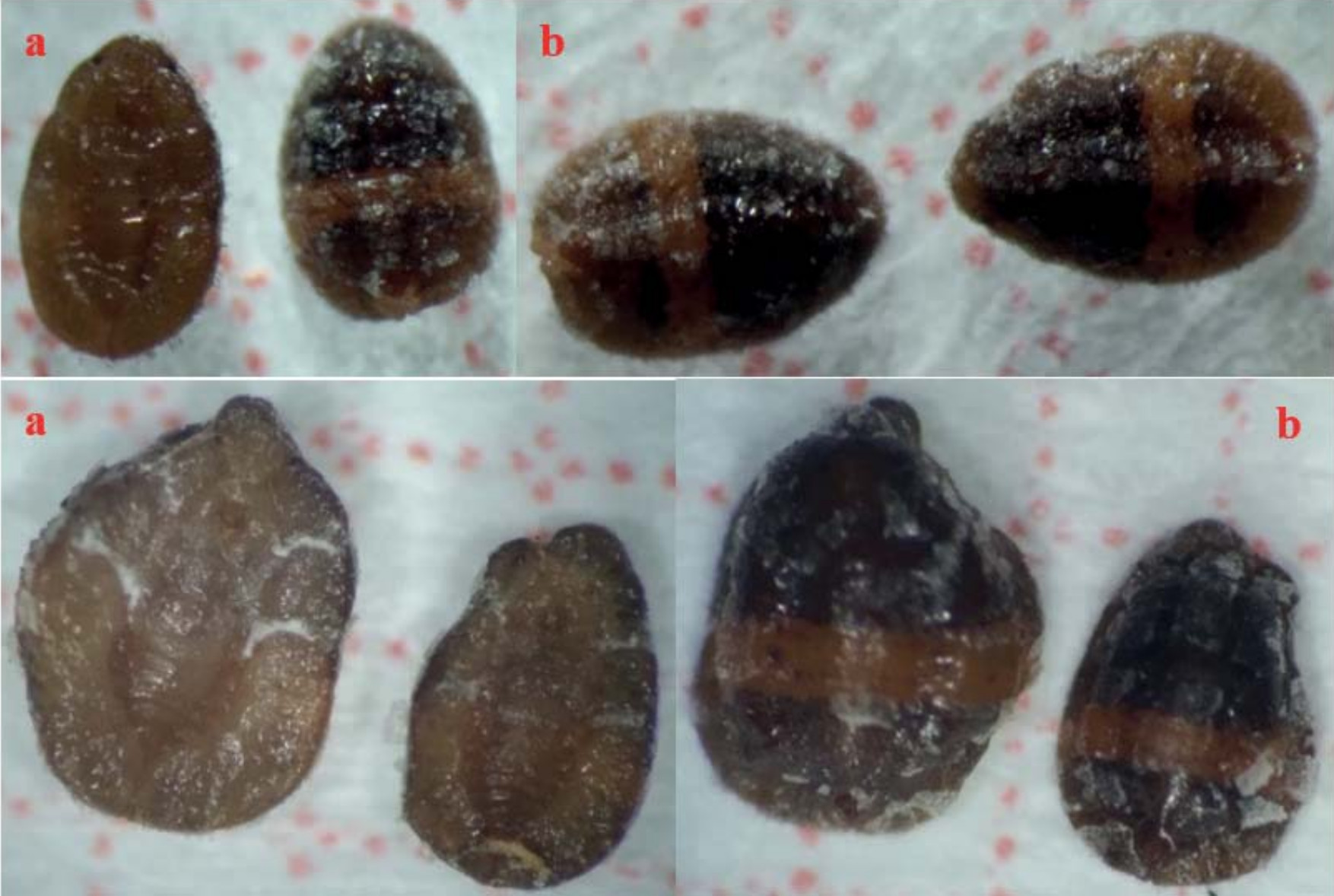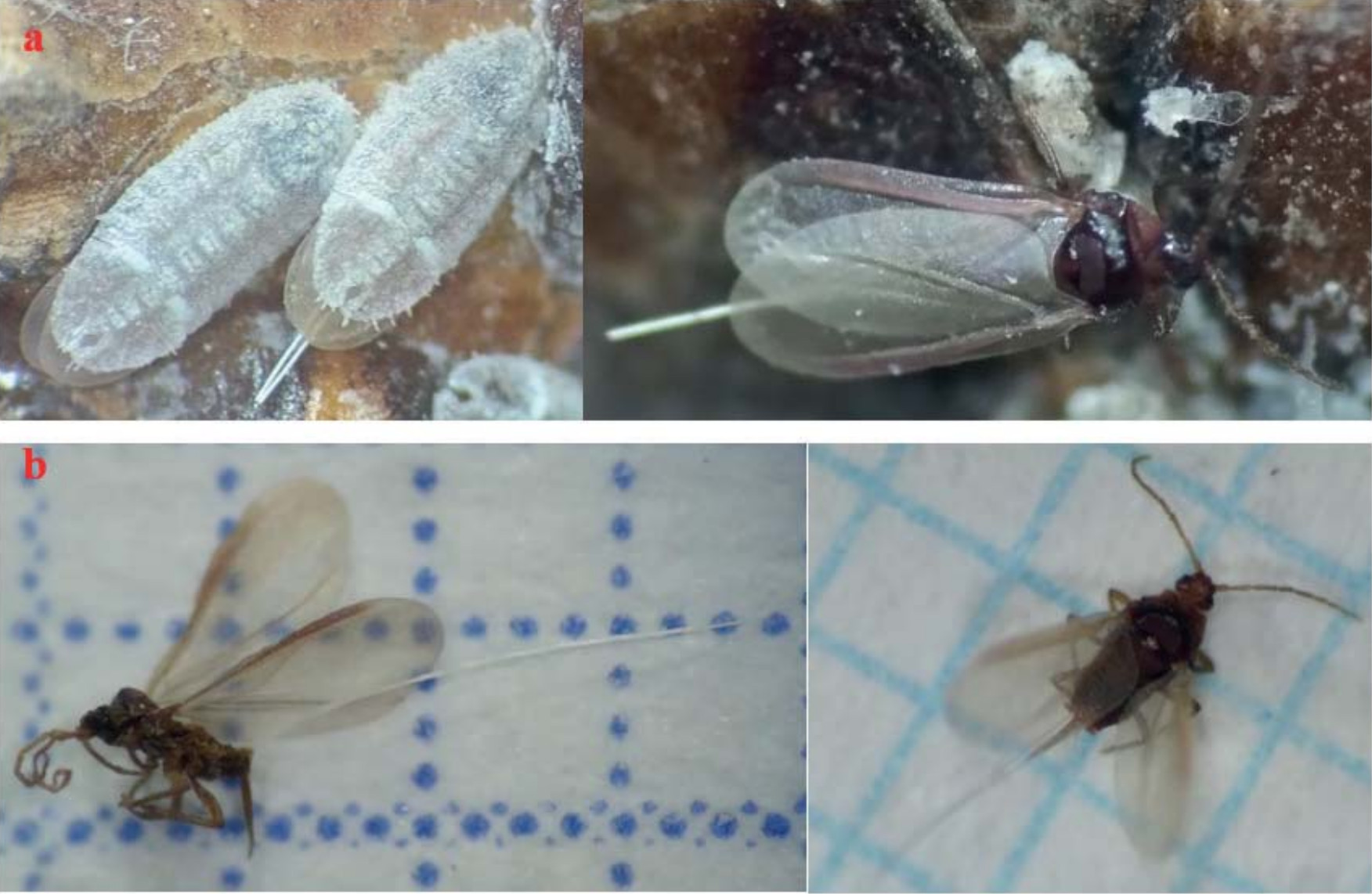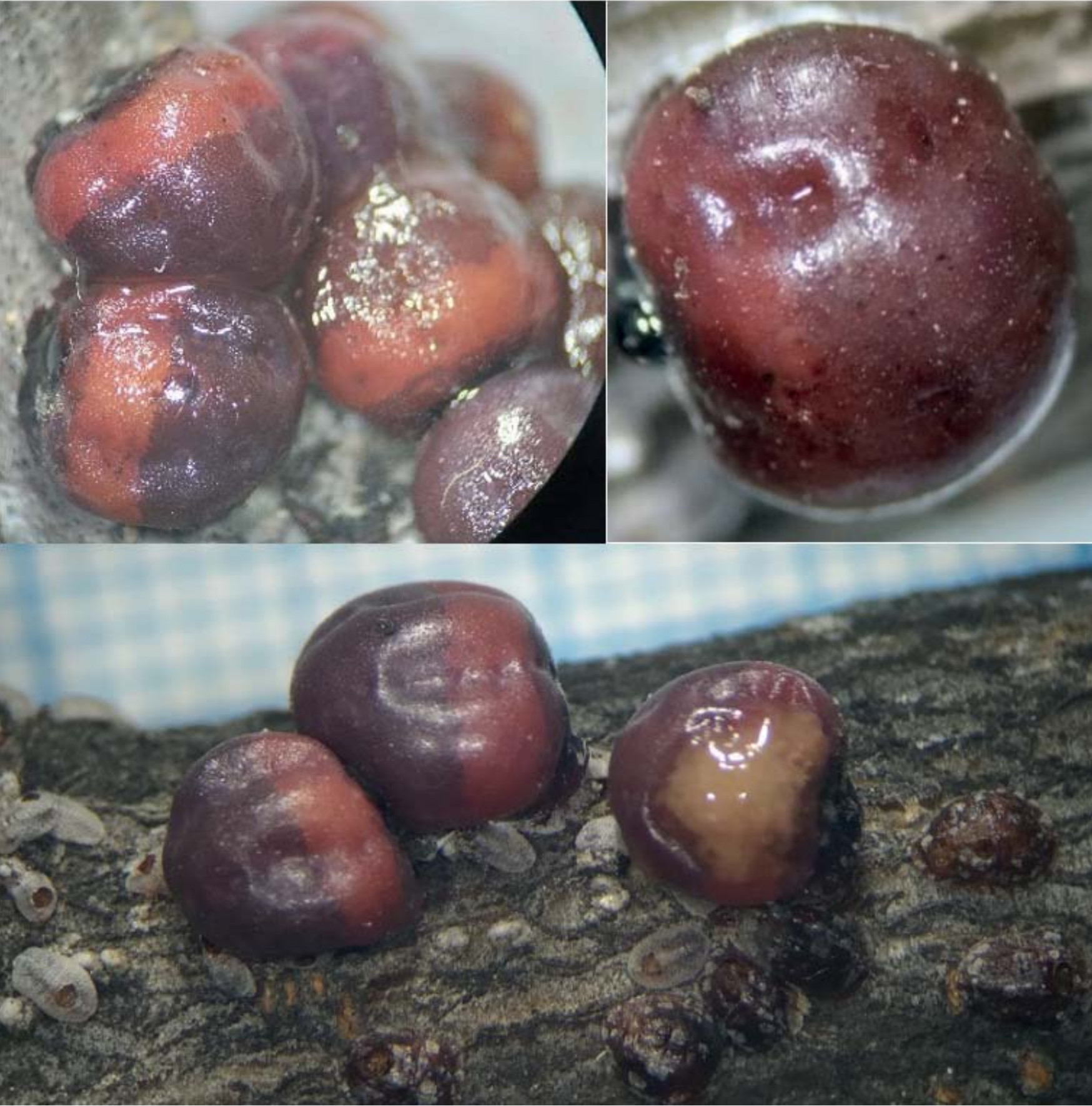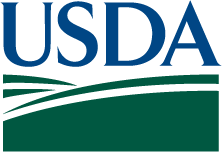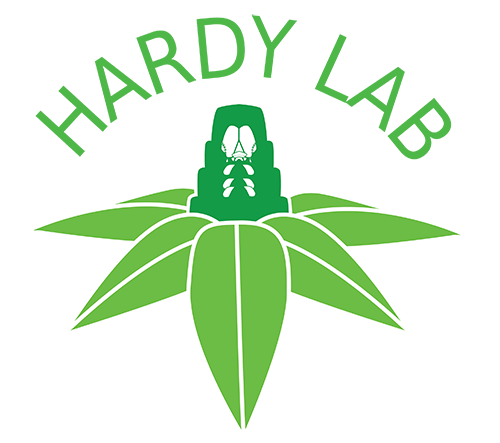Valid Names Results
Didesmococcus unifasciatus (Archangelskaya, 1923) (Coccidae: Didesmococcus)Nomenclatural History
- Physokermes unifasciatus Archangelskaya 1923: 265. Type data: UZBEKISTAN: Samarkand, on Persica sp.. Syntypes, female, Type depository: St. Petersburg: Zoological Museum, Academy of Science, Russia; accepted valid name
- Physokermes (Eulecanium) unifasciatus; Archangelskaya 1931: 79. subsequent use
- Sphaerolecanium unifasciatus (Archangelskaya, 1923); Kiritshenko 1936: 70. change of combination
- Lecanium unifasciatus (Archangelskaya, 1923); Borchsenius 1937: 85. change of combination
- Eriochiton amygdalae Rao 1939: 59. Type data: PAKISTAN: Baluchistan, Loralai, on almond tree.. Holotype, female, Type depository: St. Petersburg: Zoological Museum, Academy of Science, Russia; junior synonym (discovered by Tang1991, 102).
- Eulecanium unifasciatus (Archangelskaya, 1923); Borchsenius 1949c: 172. change of combination
- Didesmococcus unifasciatus (Archangelskaya, 1923); Borchsenius 1953: 282. change of combination
- Didesmococcus megriensis Borchsenius 1953: 282. Type data: USSR: Armenia, Megri, on Persica vulgaris, Amygdalus communis, Armeniaca sp. and Prunus sp.. Syntypes, female, Type depository: St. Petersburg: Zoological Museum, Academy of Science, Russia; junior synonym (discovered by Danzig1970, 1017).
Common Names
Ecological Associates
Hosts:
Families: 3 | Genera: 6
- Moraceae
- Ficus carica | TerGri1956
- Rosaceae
- Chaenomeles sinensis | Varshn1992 | (= Cydonia vulgaris)
- Malus domestica | Potaev1993 TorabiVaHo2010
- Malus pumila | Varshn1992
- Prunus | Borchs1957 Borchs1960b Potaev1993 Potaev1999 TerGri1956 TorabiVaHo2010 | (= Amygdalus, Armeniaca)
- Prunus amygdalus | Hodgso1994a Moghad2013 TerGri1956 | (= Persica)
- Prunus lycioides | MoghadWa2024 | (=Amygdalus lycioides)
- Prunus pedunculata | Danzig1977a | (= Amygdalus pedunculata)
- Prunus persica | Borchs1957 KaydanKo2010 MoghadTa2010 | (= Amygdalus communis, Persica vulgaris)
- Prunus prostrata | Borchs1957 Hodgso1994a TerGri1956 | ssp. concolor
- Prunus scoparia | TorabiVaHo2010 | (= Amygdalus scoparia)
- Prunus tenella | Borchs1957 | (= Amygdalus nana)
- Pseudocydonia sinensis | EFSA2023i | (= Chaenomeles sinensis) (= Cydonia vulgaris)
- Ulmaceae
- Ulmus | Potaev1999
Foes:
Families: 5 | Genera: 11
- Aphelinidae
- Coccobius annulicornis | MoghadWa2024
- Coccophagus kabulensis | Sugony1985
- Coccophagus lycimnia | Bolu2012
- Coccophagus piceae | Bolu2012
- Coccophagus scutellaris | EFSA2023i
- Coccinellidae
- Encyrtidae
- Blastothrix sericea | YousefVaEb2018
- Habrolepis dalmanni | FallahJa2017
- Metaphycus | Bolu2012
- Metaphycus babajani | BabayaOg1985 Potaev1999
- Metaphycus claviger | DavoodTaFa2004
- Metaphycus pulvinariae | DavoodTaFa2004
- Metaphycus punctipes | EFSA2023i
- Microterys | BabayaOg1985 Bolu2012
- Microterys cuprinus | FallahJa2017
- Microterys hortulanus | FallahJa2017 EFSA2023i
- Microterys nuticaudatus | DavoodTaFa2004
- Microterys sylvius | EFSA2023i
- Noctuidae
- Pteromalidae
- Pachyneuron | Potaev1999
- Pachyneuron muscarum | MoghadWa2024
Geographic Distribution
Countries: 11
- Afghanistan | KozarFoZa1996 Siddiq1966 Sugony1985
- Armenia | Hodgso1994a TerGri1956 TerGri1966a
- China
- Nei Monggol (=Inner Mongolia) | BenDov1993
- Iran | KozarFoZa1996 Moghad2009 TorabiVaHo2010
- Lebanon | Hodgso1994a
- Mongolia | BenDov1993
- Pakistan | Rao1939
- Tajikistan (=Tadzhikistan) | BenDov1993
- Turkey | CiftciBo2021 KaydanKo2010
- Turkmenistan | Potaev1993 Potaev1999
- Uzbekistan | Archan1923
Keys
- Tang1991: pp.101 ( Adult (F) ) [China]
- Borchs1957: pp.311 ( Adult (F) ) [Palaearctic region ]
Remarks
- Structure: Live adult female up to 44 mm long; dorsum highly convex, with a small marginal lip (Moghaddam & Watson 2024). The females are large and globular, dark red in color with a red horizontal band about 0.8 mm wide. This band lies over the anterior abdominal terga of the animal. The colour of the body is wine red, except for the terga which has a lighter colour throughout the preoviposition phase. Adult females have eight antennal segments. (EFSAi, 2023)
- Biology: It completes one generation per year in Lebanon; adults of both sexes appear and mate during April. Fertilised females double their size between the end of April, when copulation occurs and the oviposition period in mid-June. A female lays between 1,500 and 2,400 eggs in 3 to 5 days, and egg hatching occurs 4 to 5 days later. The female passes through three nymphal instars and the male through four instars. The emerging crawlers feed for several weeks and enter a summer diapause. They may settle under empty male tests (waxy covers that protect the pupal stage) or any other cover that gives them protection from direct sunlight. In autumn they moult and the nymphs settle in dense colonies on tree twigs, branches and seldom on the trunk of mature trees; in almonds, many nymphs settle in the folds of bark at the base of spurs (young branches) (Talhouk, 1975). After feeding for a while, they may undergo a winter diapause, as second instar nymphs, which lasts till the following spring (Gerson and Applebaum, 2019). (EFSA2023i)
- Economic Importance: D. unifasciatus is one of the most important pests on trees in Iran, particularly on stone fruits. The species produces copious sugary honeydew, which promotes sooty mould growth. The sooty mould associated with heavy infestations of D. unifaciatus can kill plant shoots.
- General Remarks: Good description and illustration of the adult female given by Hodgson (1994a). Good description of the adult female, first-instar nymph, female last-instar nymph and male last-instar nymph given by Borchsenius (1957). Detailed color photos of life stages and infestations in Bolu (2024).
Illustrations
Citations
- Archan1923: description, distribution, host, illustration, taxonomy, 265
- Archan1931: description, distribution, host, illustration, taxonomy, 79-81
- Archan1937: description, distribution, host, illustration, taxonomy, 40-42
- Babaia1987: distribution, economic importance, host, 133
- BabayaOg1985: biological control, chemical control, distribution, economic importance, host, 18-19
- BenDov1993: catalog, 106-107
- Bolu2012: distribution, host, 107-114
- Bolu2024: biology, economic importance, host, illustration, life cycle, male, natural enemies, nymph,
- Borchs1937: description, distribution, host, illustration, taxonomy, 84-85
- Borchs1949d: taxonomy,
- Borchs1950b: distribution, host, taxonomy, 149
- Borchs1953: taxonomy, 282-283
- Borchs1957: description, distribution, host, illustration, taxonomy, 315-322
- CamachCh2015: distribution, host, host distribution, host plant, host plants, illustration, importance, infra-red, 8, 12
- CiftciBo2021: distribution, host, 236
- Danzig1970: taxonomy, 1017-1018
- Danzig1972: distribution, host, 201
- Danzig1972c: distribution, host, 582
- Danzig1974: distribution, host, 70
- Danzig1977a: distribution, host, 201
- DavoodTaFa2004: biological control, distribution, 51-66
- EFSA2023i: diagnosis, distribution, host, natural enemies, taxonomy,
- FallahJa2017: distribution, natural enemies, 14, 21, 22, 33
- FowjhaKo1994: distribution, host, 344
- GillKo1997: distribution, economic importance, host, 161-163
- Hodgso1994: taxonomy, 171-172
- Hodgso1994a: description, distribution, host, illustration, taxonomy, 221-224
- KaydanKo2010: distribution, host, 198
- Kiritc1932a: taxonomy, 262
- Kiritc1936: distribution, host, 70
- KondoWa2022a: distribution, host, list, 10
- KozarFoZa1996: distribution, host, 65
- KozarWa1985: catalog, distribution, 77
- Moghad2009: distribution, host, 7-8
- Moghad2013a: distribution, host, 9
- MoghadTa2010: distribution, host, 31-32
- MoghadWa2024: diagnosis, distribution, economic importance, host, illustration, natural enemies, 8, 14, 56-57
- Potaev1993: distribution, host, 35, 37
- Potaev1999: biological control, distribution, economic importance, host, life history, taxonomy, 77
- Rao1939: distribution, host, taxonomy, 59-60
- Siddiq1966: distribution, economic importance, host, 4-5
- Sugony1985: biological control, distribution, host, 31-33
- Tang1991: description, distribution, host, taxonomy, 102-104
- TangLi1988: description, distribution, host, illustration, taxonomy, 96,97
- Tao1999: distribution, host, taxonomy, 55
- TerGri1956: description, distribution, host, illustration, taxonomy, 42-43
- TerGri1966a: distribution, host, 371
- TorabiVaHo2010: distribution, host, 153-162
- UlgentErYa2022: distribution, host, S116
- Varshn1992: distribution, host, 89
- YousefVaEb2018: natural enemies,
